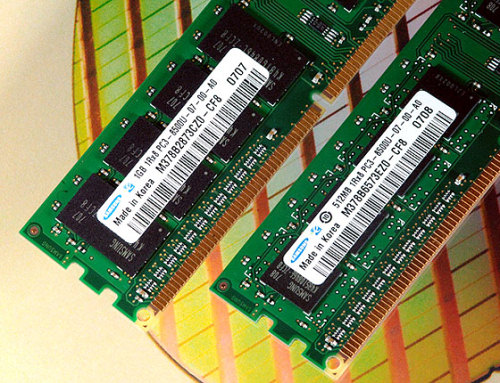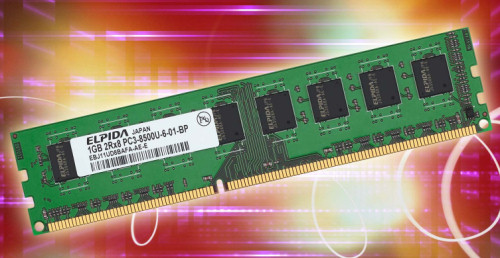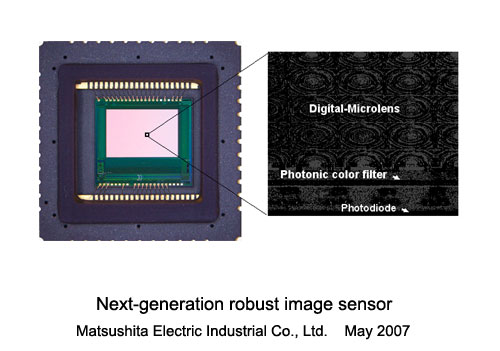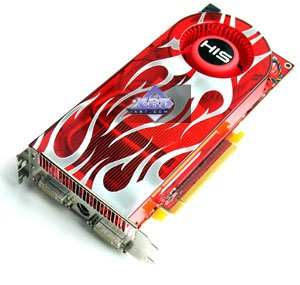 |
||
|
||
| ||
DDR3 Of Samsung, Elpida Validated For Intel's DDR3 Chipsets Panasonic Develops Next-Gen Image Sensor AMD Unveils Name Of Its Next CPU AMD Introduces Radeon HD 2000 GPU Series DDR3 Of Samsung, Elpida Validated For Intel's DDR3 Chipsets Samsung Electronics announced today that 21 of its DDR3 solutions have been validated on Intel Corporation's reference platform to work with Intel's next generation DDR3 chipsets.  Samsung's Intel-validated solutions include 13 modules and eight monolithic devices in combinations of 512 Megabit / 1 Gigabit densities with speeds of 800 or 1066Mb/s. Elpida Memory has also received Intel's validation of its DDR3 main memory based on the G33 chipset reference platform. The first application of DDR3 memory will be in high-end desktop PCs but is likely to later replace DDR2 memory in notebook PCs and servers.  Elpida's products validated by Intel:
Source: Samsung Electronics, Elpida
Panasonic Develops Next-Gen Image Sensor Panasonic, the brand by which Matsushita Electric Industrial is known, today announced the development of a robust and lightfast image sensor for the next generation. Panasonic's technological breakthrough allows a robust MOS image sensor for use under harsh sunlight for more than 20 years. Unlike traditional image sensors with polymer onchip microlenses and dyed color filters, the MOS image sensor has digital-microlenses and photonic color filters, both made of inorganic materials that are inherently fade-resistant and quite robust. Conventional MOS image sensors require polymer onchip microlenses and dyed RGB color filters, which are fragile and extremely susceptible to sunlight exposure and a change in temperature. As a result, color images captured by a camera used under direct sunlight, including the ultra-violet (UV) portion, and higher temperature conditions will fade faster.  The cutting-edge semiconductor process technology can realize the pattering of an array of digital-microlenses made of an inorganic material in subwavelength dimensions. A digital-microlens can be formed by patterning digitally the inorganic material in concentric rings, which works out as a conventional onchip microlens to gather more light onto the photo diode area. The light path of each digital-microlens can therefore readily be designed according to its relative position on the image area. As a result, a uniform sensitivity can be achieved across the image area in any camera module in use. Furthermore, photonic color filters made of inorganic materials have been implemented for the first time by the photonic crystal technology, which allows the photonic color filters to select any colors form UV to infrared spectral regions. The photonic color filters can also provide a variety of camera modules with lightfastness that is essential for an increasing number of tough end uses such as security cameras and automotive cameras. Source: Panasonic
AMD Unveils Name Of Its Next CPU AMD today unveiled the upcoming AMD Phenom processor family name and publicly demonstrated the first all-AMD enthusiast platform, codenamed “FASN8.” AMD expects quad-core and dual-core AMD Phenom-based desktop systems will ship in the second half of 2007. In a demonstration in San Francisco, AMD previewed an eight-core platform, codenamed “FASN8,” pronounced “fascinate,” to show the first AMD silicon-based next-generation eight-core platform. The demonstration platform includes two quad-core AMD Phenom processors, the new DirectX 10 ATI Radeon HD 2900 XT, as well as an upcoming AMD next-generation, high-performance chipset, due in the second half of 2007. AMD Phenom processors will be designed to facilitate intelligent uses of energy and system resources that are reliable, virtualization-ready and energy efficient, driving improved performance-per-watt. All AMD Phenom processors will feature resources like an integrated DDR2 memory controller, HyperTransport technology links, and 128-bit Floating Point Units, for improved speed and performance in floating point calculations. With the "true" quad-core design offered by the upcoming AMD Phenom processors, cores communicate on the die rather than through a front side bus external to the processor – a bottleneck inherent in other products that are packaging two dual-core chips to form quad-core processors. Additionally, AMD’s Direct Connect Architecture on-chip ensures that all four cores have optimum access to the integrated memory controller and integrated HyperTransport links, so that performance scales well with the number of cores. This design is also highlighted by a shared L3 cache for quicker data access and Socket AM2 and Socket AM2+ infrastructure compatibility to enable a seamless upgrade path. AMD’s open platform approach allows for AMD Phenom processors and platforms that are compatible with a wide range of solutions, including motherboard and chipset partners ASUS, Gigabyte, MSI and NVIDIA. Source: AMD
AMD Introduces Radeon HD 2000 GPU Series AMD today introduced the ATI Radeon HD 2000 series, a top-to-bottom line of ten discrete graphics processors for both desktop and mobile platforms. The ATI Radeon HD 2000 series of products introduces DirectX 10 gaming. The line-up boasts many innovations, including a second-generation Unified Shader Architecture (USA), a 512 Mbit memory bus designed, and new Unified Video Decoder (UVD) technology. The mid-range and entry-level GPUs use an energy-efficient 65 nm process technology and achieve silent, passive cooling, and lower power consumption. Cards on new GPUs are optimized for dynamic geometry acceleration, complex pixel processing and expanded non-graphical compute capabilities for more advanced characters and animation, more detailed environments, and more realistic real-world physics simulations. The ATI Radeon HD 2000 series also features native ATI CrossFire technology. In addition to gaming, the ATI Radeon HD 2000 series supports ATI Avivo HD technology. The aforementioned UVD handles HD multimedia, allowing consumers to watch the latest HD DVD and Blu-ray discs.  The ATI Radeon HD 2000 series offer a new simplified video and sound solution through HDMI, making it easy to switch between watching content on a high-definition television and working at a monitor as only a single cable is needed for both video and audio. Available immediately, the ATI Radeon HD 2900 XT is expected to be priced at USD $399 (SEP) including Team Fortress 2, Portal, and Half-Life 2: Episode Two from Valve (when they become available). Rounding out the family are the entry-level and mid-range ATI Radeon HD 2600 and ATI Radeon HD 2400 series. The ATI Radeon HD 2600 and ATI Radeon HD 2400 cards are scheduled to ship in late June with pricing to be announced. Numerous add-in-board partners including Asus, Club3D, Diamond Multimedia, GeCube, Gigabyte, HIS, MSI, Palit, PowerColor, Sapphire and VisionTek will offer ATI Radeon HD 2000 series graphics cards. System integrators worldwide, including Falcon Northwest, Maingear, Vadim, and Velocity Micro, will also be supporting the ATI Radeon HD 2000 series bringing gaming platforms to market. For graphics performance on the go, the ATI Mobility Radeon HD 2600 series offers its capabilities for high-end mobile systems. While the ATI Mobility Radeon HD 2400 series is intended for thin and light notebooks. Value price range is covered with the ATI Mobility Radeon HD 2300. Notebooks from OEM partners including Acer, ASUS, Fujitsu, Fujitsu-Siemens Computers, Gateway, HP, LG, Packard Bell, Samsung, and Toshiba, and ODM whitebook partners including Arima, ASUS, ECS, First International Computer Inc., and MSI, will be available beginning in May. Source: AMD
Write a comment below. No registration needed!
|
Platform · Video · Multimedia · Mobile · Other || About us & Privacy policy · Twitter · Facebook Copyright © Byrds Research & Publishing, Ltd., 1997–2011. All rights reserved. |